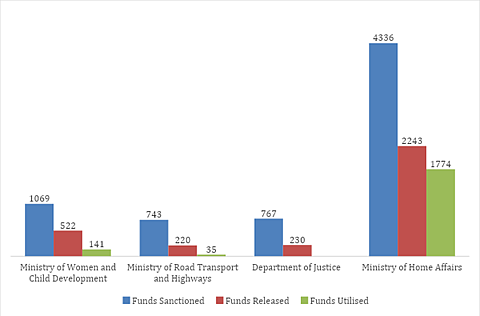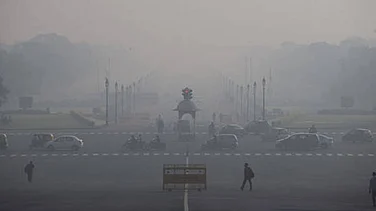The recent tragedy at RG Kar Medical College in Kolkata, where a junior doctor was brutally raped and murdered in the hospital itself, has once again bought to light the ongoing struggles with women’s safety and security in the country. Despite the introduction of several government initiatives like the Nirbhaya Scheme, incidents like these force us to confront the unpleasant truth: women in India remain unsafe.
The Nirbhaya Scheme was heralded as a game-changer in the wake of the 2012 Delhi gang rape. This scheme was specifically designed to ensure women’s safety across the nation. But more than a decade later, has it truly delivered?
Understanding The Nirbhaya Scheme
The Indian Government in 2013 launched the 'Nirbhaya Fund' with the aim to enhance women's safety and security across the nation. It is a non-lapsable corpus fund, meaning that any unutilised amount would be carried to the next fiscal year.
This fund is managed by an Empowered Committee (EC) which operates under the Nirbhaya Framework. This committee evaluates and recommends funding proposals for various initiatives towards women’s safety and security. Following approval of funds, the EC collaborates with relevant ministries and agencies to ensure the funds are effectively utilised to carry out such projects.
According to Ministry of Finance guidelines, project and scheme costs are to be shared in a 60:40 ratio.
A key initiative is the ‘One Stop Centre’ (OSC) Scheme; these centres are to provide a full range of services for women who have experienced violence. These services include legal aid, medical treatment as well as temporary shelter. OSCs are intended to be located within a two-kilometre radius of hospitals or medical facilities. However despite approvals, there are only 813 OSCs across 36 states and Union Territories, with 785 currently operational.
Fund Flow And Impact
The Union Budget for FY 2024-25 has significantly increased allocations for women’s safety and security, with the 'Nirbhaya Fund' itself receiving a 100% boost—from Rs 100 crore in 2023-24 to Rs 200 crore for the current year.
However in 2023, about 70% of the Nirbhaya Fund was utilised, leaving 30% of it unspent. This not only raises questions on the efficacy of the fund, but also about the government's commitment to women's safety.

The Nirbhaya Fund disproportionately supports three main initiatives—Safe City projects, OSCs, and Fast Track Special Courts—consuming nearly 64% of the total fund. Notably, the Safe City project has received Rs 2919.55 crore but only benefits eight major cities, despite rural areas reporting 75% of rape cases.
In 2021, only half of the Ministry of Women and Child Development's allocated funds were released, with just 27% utilised, and West Bengal reported zero utilisation. Funding distribution across regions is also uneven, with only seven states receiving over 60% of the total.
The RG Kar Reality Check
The recent tragedy at RG Kar Medical College underscores the profound shortcomings in India’s approach to women’s safety, even amidst significant policy interventions like the Nirbhaya Fund.

According to the National Crime Records Bureau (NCRB) data from 2022, an average of 86 rapes occurs daily in India. Yet, conviction rates for rape are alarmingly low, ranging between 27%-28% from 2018-2022. It gets worse--a 2018 study finds that 99% of cases go unreported.
While Kolkata was found to be the safest city with the lowest number of cognizable offenses per lakh population among major metropolises, West Bengal’s statistics paints a concerning picture. The state registered 34,738 cases of crimes against women in 2022, with a crime rate of 71.8%, significantly higher than the national average of 65.4%.
Despite the urgency of the issue, the funds released under the Nirbhaya Scheme in West Bengal have sharply declined.

Of the Rs 104.72 crores allocated to West Bengal from 2016-17 to 2021-22 under the Nirbhaya Fund, Rs 95.32 crores were utilised. The state has notably underperformed in implementing key initiatives. Despite approval for 23 One-Stop Centres (OSCs), none are operational, leaving no women in the state receiving assistance under this scheme.
The Safe City project in Kolkata has also faced issues, with disbursements dropping from Rs 47.57 crores in 2018-19 to zero in 2020-21. Consequently, only 328 women in West Bengal received assistance from the Nirbhaya Scheme between 2015 and 2023, a stark contrast to the nationwide total of 706,677. These deficiencies underscore the state's neglect of women's safety and security.
Where Do We Go Now?
The West Bengal government's reduction in funding underscores that women’s safety is not a priority. Even with the funds disbursed, there has been little real impact, pointing to serious implementation issues.
Despite the government’s commitment to women’s safety through the Nirbhaya Scheme, it has fallen short of its promise. Funding has increased significantly, yet the scheme is hampered by bureaucratic delays, administrative inefficiencies, and a lack of political will. Transparency and accountability are crucial; the government should release detailed reports and conduct independent audits to ensure effective resource utilization.
The recent tragedy highlights the critical need for localised safety measures, such as establishing OSCs in high-risk areas supported by local law enforcement and community organisations. Moreover, the lack of synergy between central and state governments has further complicated the scheme's implementation.
Addressing societal norms that perpetuate gender-based violence requires sustained efforts in education, awareness, and community engagement. Political accountability is essential to catalyse these changes.
The road to gender equality is long, but with decisive action, meaningful progress is possible. The promise of the Nirbhaya Scheme remains unfulfilled. The time for complacency has passed—now is the time to act.
(Sharon Thawaney is a researcher based in Kolkata)
(Views expressed are personal)
















